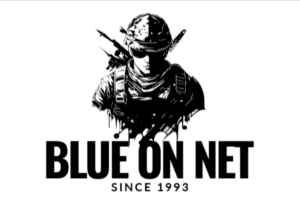In military terminology, few phrases carry as much weight and tragic significance as “blue-on-blue.” This term, deeply embedded in military lexicon worldwide, refers to one of warfare’s most devastating and preventable tragedies: friendly fire incidents where military forces accidentally attack their own troops or allied personnel.
Origins and Color Coding System
The term “blue-on-blue” stems from the NATO military color coding system used in tactical planning and operations. In this standardized system, blue represents friendly forces, red indicates enemy or hostile forces, green denotes neutral parties, and yellow typically represents unknown entities. When military planners and commanders refer to “blue-on-blue” incidents, they’re describing attacks where blue forces (friendly troops) engage other blue forces, resulting in accidental casualties among their own ranks.
This color-coding system isn’t merely academic; it forms the foundation of military communication, planning, and situational awareness across NATO member countries and allied forces. The system helps commanders quickly identify and communicate the nature of various forces on the battlefield, making the term “blue-on-blue” immediately understood across different military branches and international coalitions.
The Reality of Friendly Fire
Blue-on-blue incidents represent one of warfare’s most psychologically damaging aspects. Unlike casualties inflicted by enemy action, friendly fire creates unique trauma for both survivors and those responsible for the incident. Military personnel train extensively to protect their comrades, making accidental harm to fellow soldiers particularly devastating from a psychological standpoint.
Statistics reveal that friendly fire incidents, while relatively rare in percentage terms, have occurred throughout military history across all major conflicts. Modern warfare, despite advanced technology and improved communication systems, hasn’t eliminated these tragic occurrences. In fact, some argue that the complexity of modern combat environments, with multiple allied forces operating sophisticated weapons systems, has created new opportunities for blue-on-blue incidents.
Contributing Factors
Several factors commonly contribute to blue-on-blue incidents. Communication breakdowns represent the most frequent cause, occurring when units fail to properly coordinate their positions or actions. In fast-moving combat situations, outdated or incomplete information about friendly troop locations can lead to tragic misidentification of targets.
Technology, while generally improving safety, can also contribute to these incidents. Advanced weapons systems with extended range capabilities mean that forces can engage targets at greater distances, sometimes without clear visual confirmation of target identity. Additionally, equipment malfunctions, particularly in identification systems, can create dangerous situations where friendly forces appear as potential threats.
Environmental conditions play a significant role as well. Poor visibility due to weather, smoke, or darkness increases the likelihood of misidentification. Urban warfare environments, with their complex terrain and civilian populations, create additional challenges for positive target identification.
Human factors cannot be overlooked. Fatigue, stress, and the fog of war can impair judgment and decision-making capabilities. Inadequate training on identification procedures or unfamiliarity with allied equipment and tactics also increases risks.
Prevention and Mitigation
Modern military forces employ numerous strategies to prevent blue-on-blue incidents. Enhanced training programs focus extensively on positive target identification, emphasizing the principle of being absolutely certain of a target’s identity before engagement. These programs include realistic simulation exercises that replicate the stress and confusion of actual combat situations.
Technological solutions continue to evolve, including improved identification friend-or-foe (IFF) systems, enhanced communication equipment, and real-time battlefield tracking systems. These technologies aim to provide commanders and individual soldiers with better situational awareness and more reliable identification capabilities.
Procedural improvements include stricter rules of engagement, mandatory confirmation protocols before firing, and enhanced coordination requirements between different units and allied forces. Many militaries have implemented multi-level authorization requirements for certain types of attacks, particularly in complex operational environments.
Lessons and Legacy
Blue-on-blue incidents serve as sobering reminders of warfare’s inherent dangers and the critical importance of proper training, communication, and coordination. Each incident typically triggers comprehensive investigations aimed at understanding contributing factors and implementing preventive measures.
The military’s approach to addressing friendly fire reflects broader principles of accountability, learning, and continuous improvement. Rather than simply accepting these incidents as inevitable, modern military doctrine emphasizes prevention through better training, improved technology, and enhanced procedures.
Understanding blue-on-blue incidents remains crucial for military professionals, policymakers, and citizens who support armed forces. These tragic events highlight both the human cost of warfare and the ongoing efforts to protect those who serve their countries, even from the unintended consequences of military action itself.
